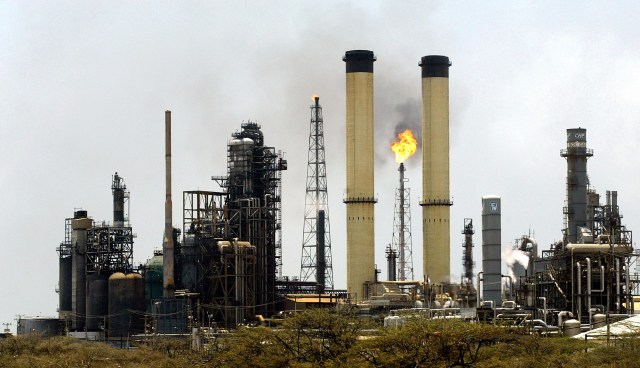
The “blackout” that took place at dawn on Friday, March 31st, at the Amuay refinery, which is part of the Paraguaná Refining Complex (CRP), in Falcón State, lasted several hours this the morning
By Correspondent La Patilla
The electrical service was restored after 8:00 am and work began to restart the machinery.
Oil workers confirmed to lapatilla.com that it was a failure in the turbogenerators that took the refinery out of service, but fortunately the electrical service was recovered.
They said that there are currently many failures and little fuel production, which amounts to around 30,000 barrels per day, which is not even enough for internal consumption.
According to various oil sources consulted, the Paraguaná Refining Complex is receiving heavy oil from the east, when it should receive it from neighboring Zulia State, which is much lighter, since the Paraguaná processing plants are not built to receive this type of extra heavy hydrocarbons and therefore, cannot process it efficiently.
As a result it occurred the failure of the catalytic disintegration plant of the Amuay refinery (Dcay) occurred. This had been forewarned weeks ago, and alredy required the repair of the regenerator, which is the main equipment, but this is a long and tedious process that they aspire to finish at the beginning of May.
Dcay is the main catalytic plant, an essential component for the production of fuel.
These problems, both the processing of heavy hydrocarbons and the poor condition of processing plants and only those that are essential are working to produce fuel, have generated that the gasoline that is distributed is not of optimal quality and its octane rating is between 85 and 90 (everything depends on the daily load and plants).
“The same thing is happening to the plants as to the cars, in the end the (electric) gasoline pump is damaged, and the reason is that they receive a fluid that their metallurgical makeup is not designed to handle and operate, but it is what it is and it is what that is being used,” said an oil worker who preferred to remain anonymous.
Workers are still on strike
This coming March 31st, the workers who provide or used to provide services for the CRP through contractors, protested again in Punto Fijo due to the non-compliance with their payments.
They waited the whole first quarter when the oil company had promised to catch up on outstanding payments to more than 1,500 workers, who are owed up to seven months of bonuses and outstanding pay, but were not paid.
“We are still waiting for them to pay us. On Tuesday we will go to the Neoa building to demand that PDVSA give us answers as to why they have not paid us,” said Jesús Marval, who provided services for Cosica.
The workers demand that PDVSA catch up with the payments, as well as the contractors that comply with what they were offered, because they all have families to support and need the money for which they worked.
They said that if they are playing (planning delays) to make them get tired, they will not do it because it is money that they have already worked for and they must pay it.